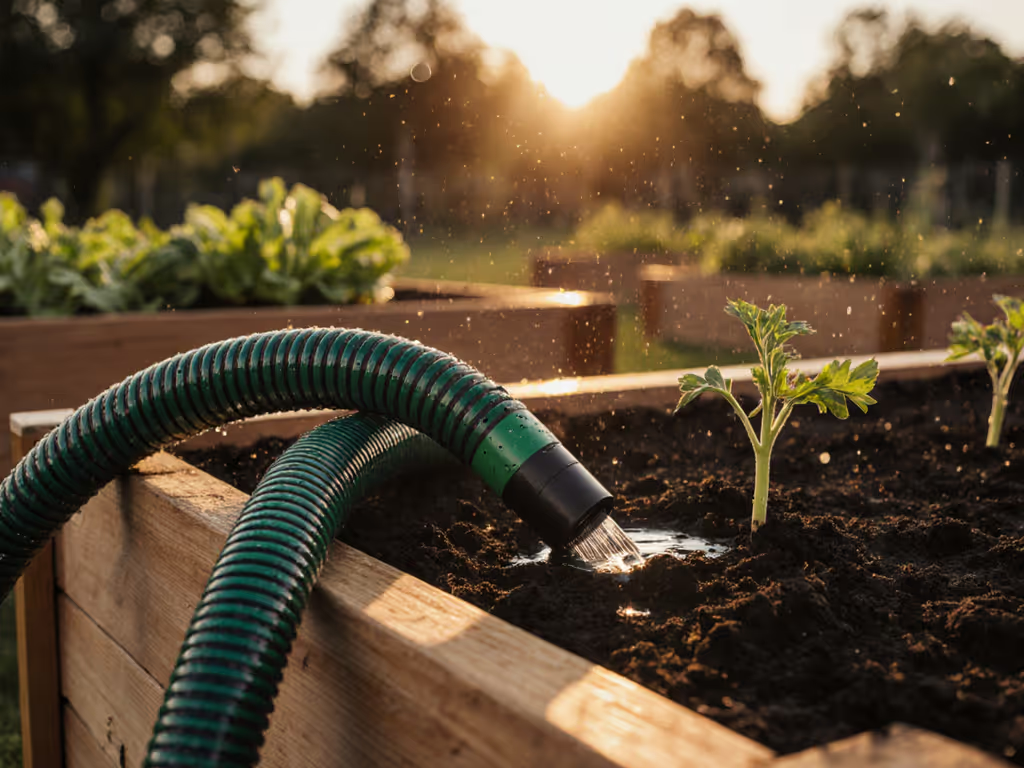
Rooftop Garden Hose Guide: Lightweight & Compact Solutions for Balcony Gardens
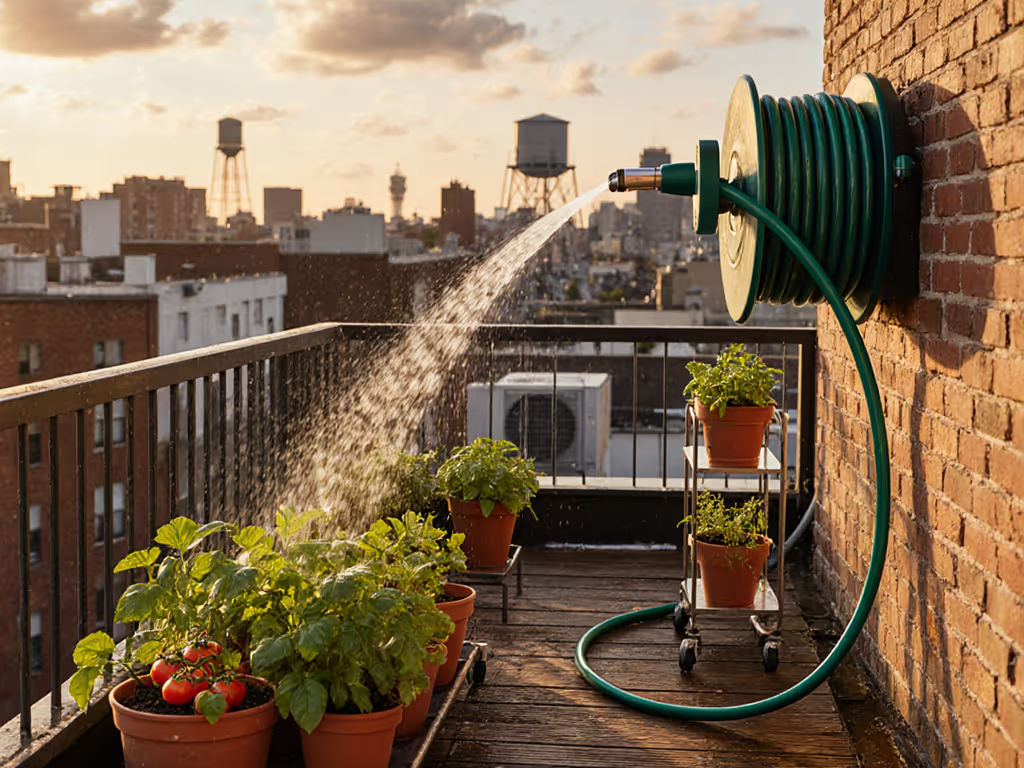
If you're managing a rooftop garden hose guide system or container garden watering setup, you've likely faced the frustration of unraveling kinks while trying to water hanging baskets, or watching your hose slip toward the edge of your balcony. Space constraints compound these issues: every inch matters when you're 15 floors up. I've seen too many hobbyists burn through seasonal hose budgets replacing cracked, UV-damaged lines that seemed "good enough." As a systems-focused installer who's configured hundreds of urban gardens, I'll share battle-tested solutions that prevent the return cycles that waste your time and money. The cheapest hour is the one you never spend redoing.
1. Ditch the Heavy Rubber Hose for True Lightweight Watering Solutions
Full-size garden hoses designed for lawns become unwieldy liabilities on balconies. An uncoiled 50-foot standard hose weighs 15-20 pounds (unnecessary bulk when carrying gear up flights of stairs). For high-rise gardening watering, prioritize hoses under 10 pounds total weight with 3/8-inch inner diameter. These deliver sufficient flow (1.5 GPM at typical city pressure) while eliminating fatigue during watering sessions.
Buy once, configure right, keep the water and time in.
Avoid "kink-free" marketing traps; many lightweight hoses collapse under moderate bends around potted trees. Instead, seek polyurethane coil hoses with strain reliefs at both ends. For compact setups, compare our best space-saving coil hoses to find coil options that stay tidy on small balconies. They rebound compactly (to 30-36 inches stored) and resist tangling when deployed. For a 100-200 sq ft balcony garden, 25-50 feet of 3/8-inch hose provides adequate reach without excess weight. And always verify "drinking water safe" certification (essential when watering edible containers).
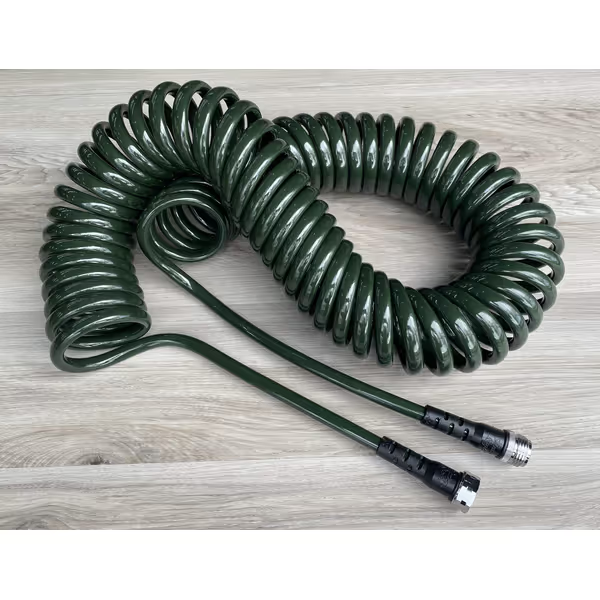
Water Right 300 Series Polyurethane Coil Garden Hose, 50-Foot x 3/8-Inch, Rosemary
2. Install Edge Guides That Prevent Falls Without Damaging Balcony Surfaces
This is your non-negotiable safety layer. Balcony edges require specialized hose guides that won't scratch railings or leave residue. Standard soil spikes (like those from garden centers) are useless for hard surfaces. Instead, use adhesive-backed rubber guides with smooth internal channels that redirect hose movement inward.
For metal railings, opt for hose guides with magnetic bases that slide along the railing (no drilling required). Position them at all corners where hoses naturally pivot during watering. I learned this the hard way after losing a hose over a 6th-floor balcony; the replacement cost and time finding it in the alley outweighed premium guides tenfold.
Check these three points before installation:
- Base material must bond securely to your railing type (concrete, metal, composite)
- Interior channel should allow 90-degree redirection without kinking
- UV-stabilized components to prevent yellowing/cracking within one season
3. Create a Friction-Averse Hose Management Station
Your balcony watering hub needs to be checklist-first in design: one location holding all critical components within arm's reach. Mount a small wall bracket (12"x12" max) holding:
- Hose guide at optimal height for natural hose path
- Quick-connect fittings (brass, not plastic)
- Hose end cap for storage
- Small nozzle with adjustable pattern
This eliminates the "hose hunt" when guests arrive or rain suddenly stops. To outfit your station, use our guide to essential hose accessories for quick-connects, nozzles, and leak-free connectors. Position the station so the hose pulls straight out without scraping walls or plants. Curved paths create friction points that accelerate wear. For renters, use removable adhesive mounts instead of permanent screws. This friction-averse approach keeps your system return-proof setup ready for daily use.
4. Prioritize UV-Resistant Balcony Hose Materials
Sun exposure at elevation is brutal: UV intensity increases 4-5% per 1,000 feet of elevation. What survives a season at ground level often fails by mid-summer on your balcony. Standard vinyl hoses develop micro-cracks within months, leading to sudden bursts when pressurized. If you're choosing materials, see our rubber vs vinyl durability by climate guide to match hose construction to your balcony conditions.
Look for hoses specifically rated for "all-climate" or "UV-stabilized" use with minimum 5-year warranties. The best UV-resistant balcony hose options use layered construction:
- Inner tube: Drinking water-safe polyurethane
- Reinforcement: Spiral-wound polyester mesh
- Outer jacket: UV-inhibited thermoplastic elastomer
This tri-layer approach prevents the "alligatoring" cracks that plague bargain hoses. When shopping, compare sidewall thickness. Premium hoses maintain 0.125"+ walls throughout, while flimsy versions thin to 0.05" at connection points.
5. Implement Smart Outdoor Hose Storage for Compact Spaces
Your balcony probably lacks closet space for traditional reels. If you prefer enclosed storage or have room for it, check our weatherproof hose reel picks to keep hoses tidy and protected. Vertical storage beats coiled piles that invite tangles. Install a wall-mounted hanger 4-6 inches above your hose guide station. This creates a natural loop path: water flows down from spigot, through guide, then hangs vertically when not in use.
Key storage criteria:
- Holds 25-50 feet of lightweight hose without tension
- Allows one-handed deployment (critical when carrying watering cans)
- Stays secure in high winds (tested to 30+ mph)
For renters, explore tension-rod systems that fit between railing posts (no installation required). Whatever you choose, avoid letting hose ends dangle near edges. A single wind gust can send 30 feet of hose overboard, turning your watering system into a falling hazard below.
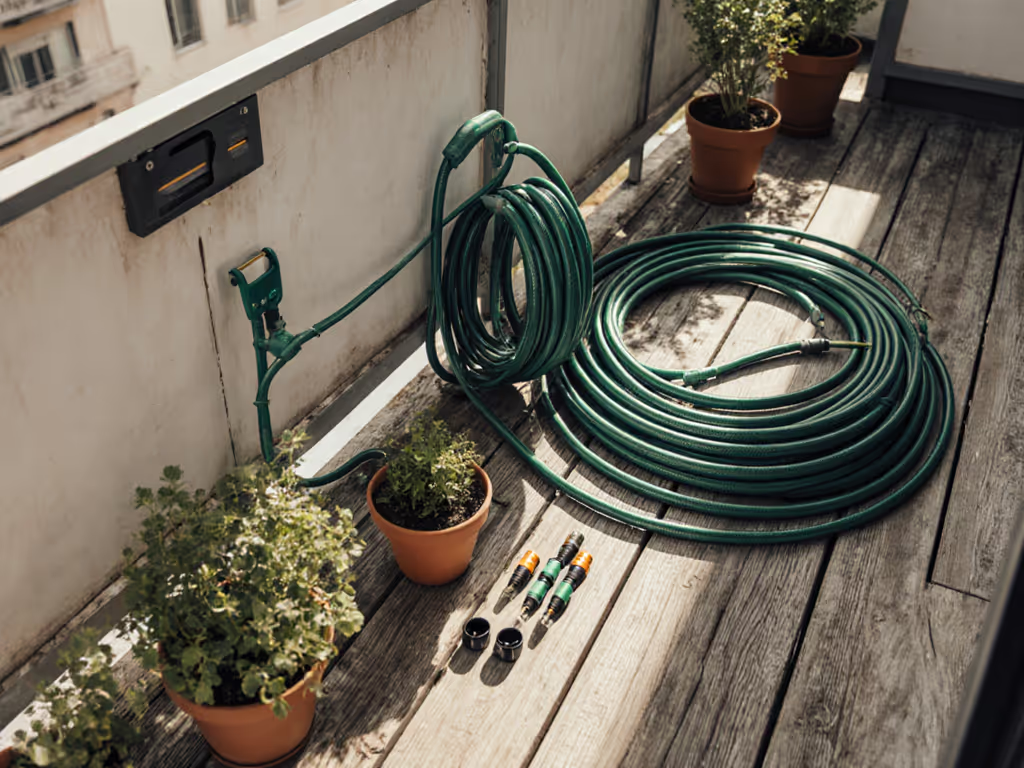
Your Actionable Next Step
This week, conduct a 10-minute balcony hose audit:
- Measure your garden's farthest watering point
- Note all edge redirection points needing guides
- Check current hose weight and UV damage
- Identify your optimal wall-mount location
Remember: across three summers I burned through two bargain hoses and a plastic reel. Tallied replacements, leaks, and hours lost. One 5/8-inch rubber hose, stainless quick-connects, and a wall-mounted steel hanger ended the churn. The upfront splurge paid for itself before the next season. Don't let your balcony become another hose graveyard: build a system that works as hard as you do.
Related Articles

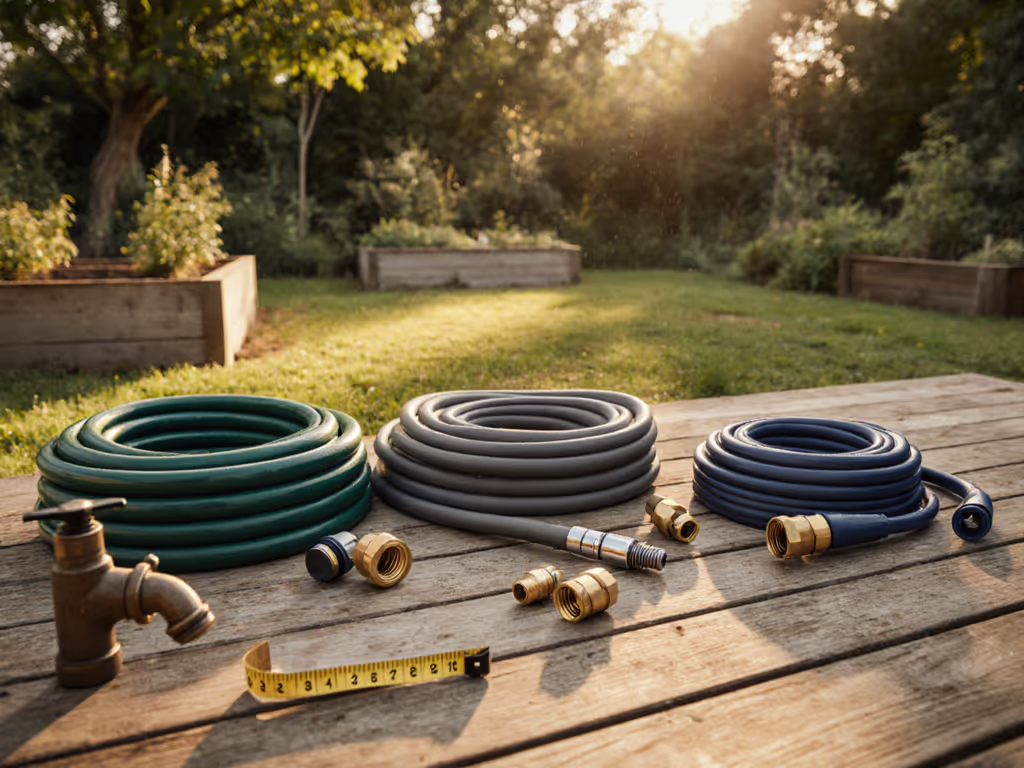
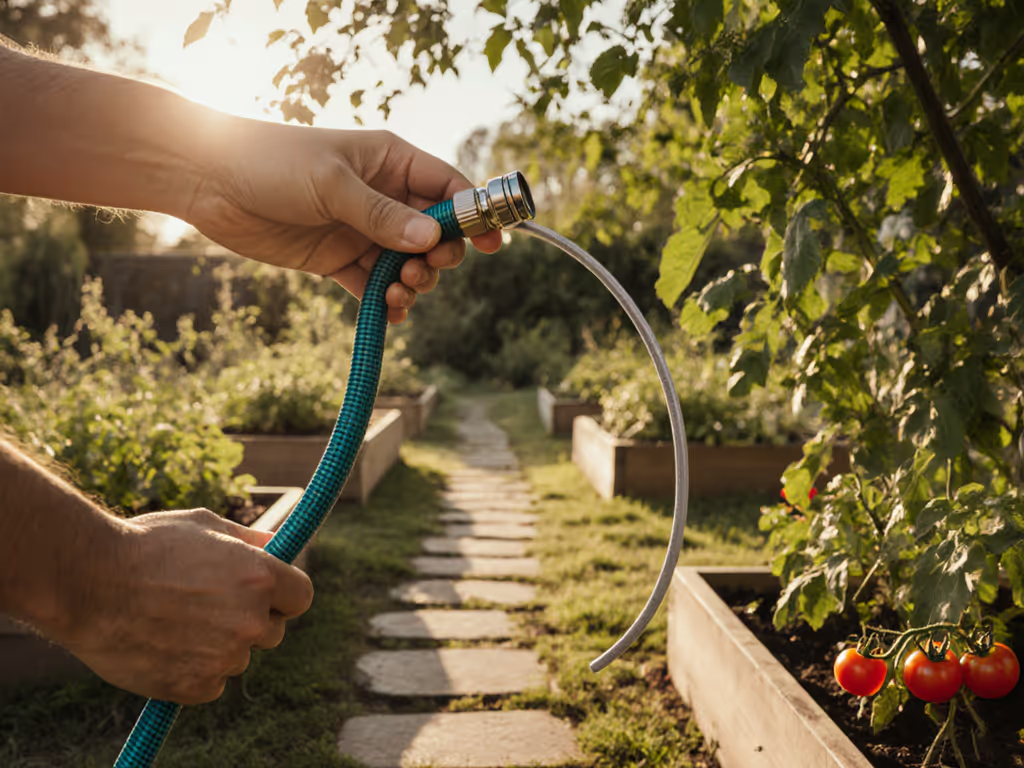
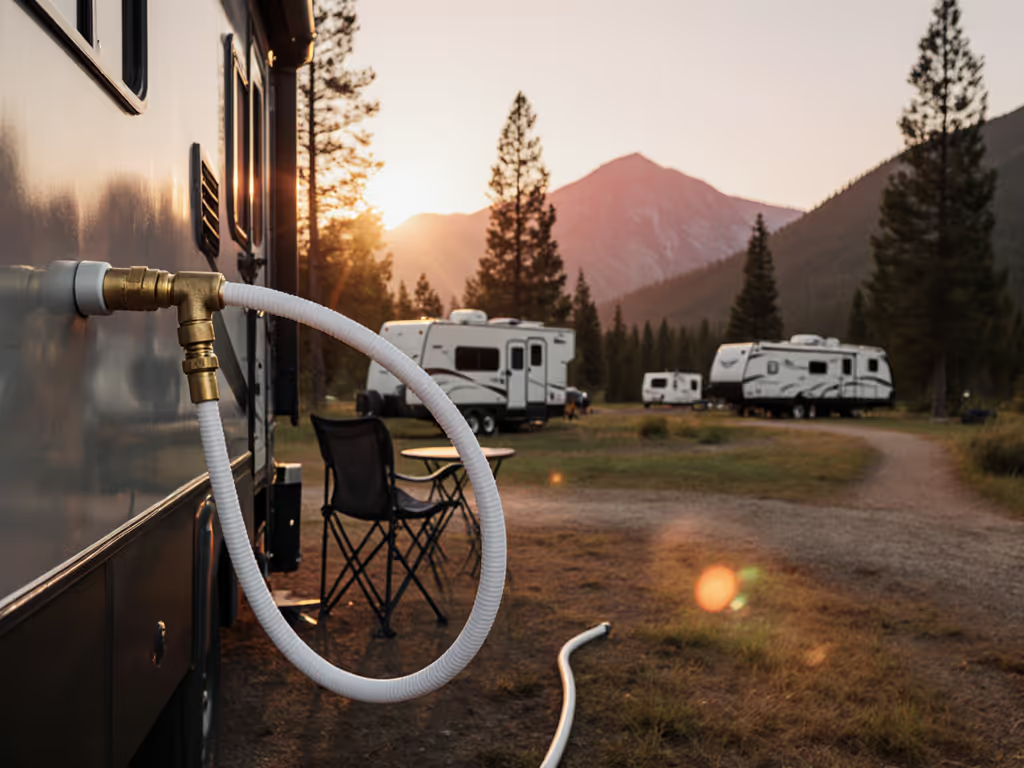
Best RV Drinking Water Hose: Lightweight Safe Picks for Travel
Get a straightforward guide to selecting a safe, lightweight RV drinking hose - what certifications matter, why garden hoses fall short, and how comfort affects proper use. Includes a field-tested top pick, a quick checklist, and maintenance tips for clean water at every stop.
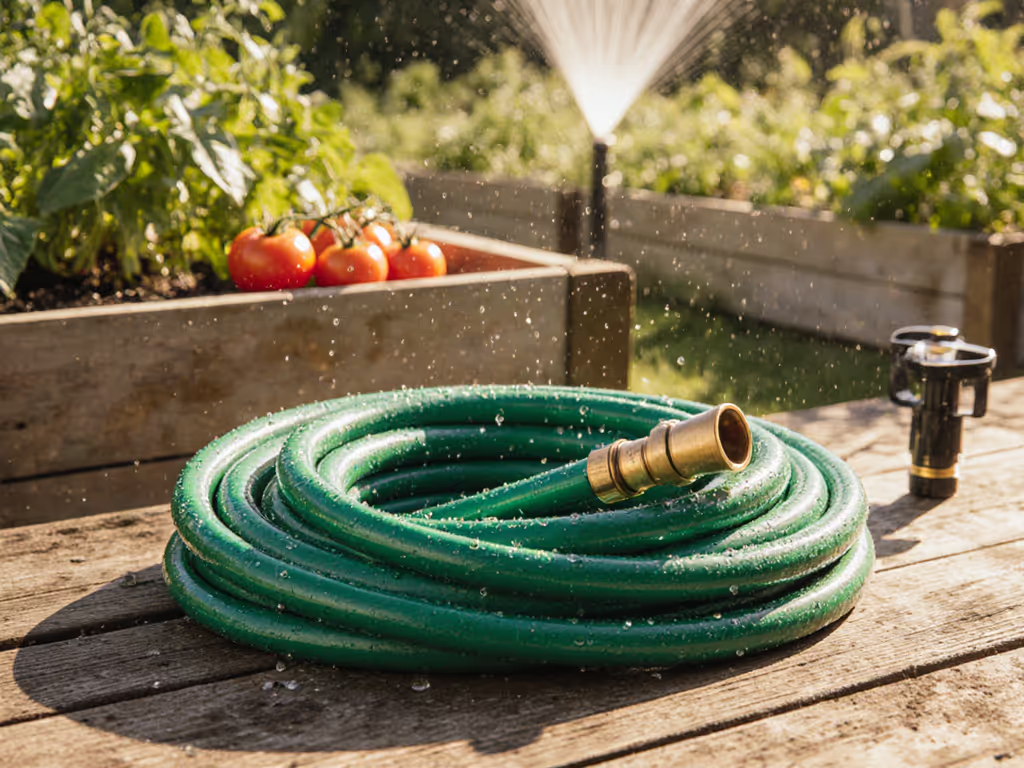
Best Garden Water Hose Under $50: Kink-Free & Leak-Proof Picks
Eliminate leaks and kinks with a simple 3-step compatibility check that matches spigot threads, hose diameter, and pressure. Then choose from three tested, budget-friendly hoses for different setups, plus quick storage and winterization tips to extend lifespan.
